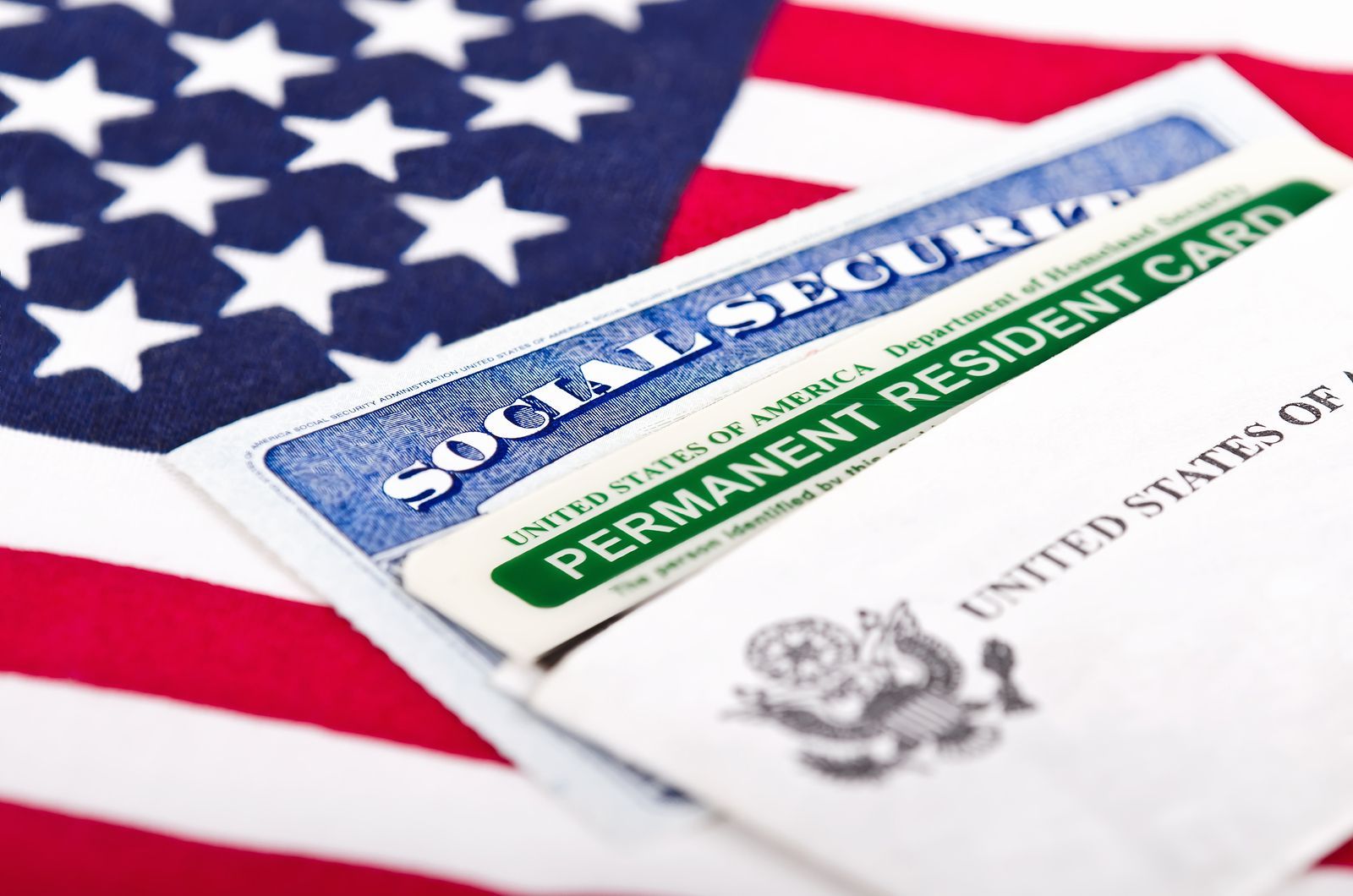🗣️ Fluent in English, Spanish & Portuguese 🌍
Your Friendly Guide to Getting a U.S. Green Card
Step-by-Step Guide to Applying for a U.S. Green Card
Your Pathway to Permanent Residency
Applying for a U.S. Green Card can be a complex process, but understanding the steps involved can make it more manageable. This comprehensive guide will walk you through the essential steps, requirements, and tips to help you successfully navigate the application process, ensuring that you are well-prepared for each stage along the way.Understanding the Green Card
A U.S. Green Card, officially known as a Permanent Resident Card, allows you to live and work in the United States permanently. There are several categories under which you can apply for a Green Card, including:- Family-based Green Cards
- Employment-based Green Cards
- Asylum or refugee status
- Diversity Visa Lottery
- Special immigrant categories
Step 1: Determine Your Eligibility
Before you begin the application process, it's crucial to determine your eligibility. Here are some common eligibility categories that you should consider:- Family-based: You may qualify if you have a close relative who is a U.S. citizen or a lawful permanent resident willing to sponsor you.
- Employment-based: If you have a job offer from a U.S. employer or possess extraordinary abilities in your field, you may be eligible for this category.
- Asylum or Refugee Status: If you were granted asylum or refugee status in the U.S., you can apply for a Green Card after one year of being in that status.
- Diversity Visa Lottery: If you are selected in the annual lottery program, you can apply for a Green Card through this pathway.
Step 2: Choose the Right Application Process
Depending on your eligibility category, the application process may vary significantly. Here are the primary pathways you can take:Family-Based Green Card
If you are applying through a family member, the U.S. citizen or permanent resident must file Form I-130, Petition for Alien Relative, on your behalf. This form establishes the relationship between you and your sponsor.Employment-Based Green Card
For employment-based applications, your employer must file Form I-140, Immigrant Petition for Alien Worker. In some cases, you may also need to go through the labor certification process to demonstrate that there are no qualified U.S. workers available for the position.Asylum or Refugee Status
If you are applying based on asylum or refugee status, you will need to file Form I-485, Application to Register Permanent Residence or Adjust Status. This form allows you to adjust your status to that of a permanent resident.Diversity Visa Lottery
If you are selected in the Diversity Visa Lottery, you will need to complete Form DS-260, Immigrant Visa and Alien Registration Application. This form is essential for processing your visa application.Step 3: Gather Required Documents
Collecting the necessary documents is a critical step in the application process. Common documents that you will need to gather include:- Proof of identity (such as a passport or birth certificate)
- Proof of eligibility (including marriage certificates, job offer letters, or other relevant documentation)
- Form I-130 or I-140 approval notice (if applicable)
- Medical examination results from an authorized physician
- Affidavit of support (Form I-864) from your sponsor, demonstrating their ability to financially support you
Step 4: Complete the Application Forms
Fill out the appropriate forms based on your eligibility category. Ensure that all information is accurate and complete to avoid delays in processing. Here are some key forms you will need to consider:- Form I-130: For family-based applications, this form is essential for establishing your relationship with your sponsor.
- Form I-140: For employment-based applications, this form is necessary for your employer to petition for your immigration.
- Form I-485: For adjustment of status, this form allows you to apply for permanent residency while in the U.S.
- Form DS-260: For Diversity Visa Lottery applicants, this form is crucial for processing your immigrant visa application.
Step 5: Pay the Application Fees
Each application form has associated fees that must be paid at the time of submission. Ensure you check the current fee schedule on the U.S. Citizenship and Immigration Services (USCIS) website. Payment can typically be made via check, money order, or credit card, depending on the specific instructions provided for each form.Step 6: Submit Your Application
Once you have completed the forms and gathered the necessary documents, submit your application to the appropriate USCIS address. Be sure to keep copies of everything you send for your records, as this will be important for tracking your application status and for any future reference.Step 7: Attend the Biometrics Appointment
After your application is submitted, you will receive a notice for a biometrics appointment. During this appointment, your fingerprints, photograph, and signature will be collected for background checks. This step is crucial for ensuring the security and integrity of the immigration process.Step 8: Prepare for the Interview
Most applicants will be required to attend an interview as part of the application process. Here are some tips to help you prepare effectively:- Review your application and supporting documents thoroughly to ensure you are familiar with all the details.
- Be ready to answer questions about your background, eligibility, and the information provided in your application.
- Bring all original documents and any additional evidence that may support your case, as this can help clarify any questions the interviewer may have.
Step 9: Wait for a Decision
After the interview, you will receive a decision on your application. This can take several weeks to months, depending on the case load and complexity of your application. During this time, it is important to remain patient and to check your application status online for updates.Step 10: Receive Your Green Card
If your application is approved, you will receive your Green Card in the mail. If you applied for adjustment of status, you may receive it at your interview. If you are outside the U.S., you will receive an immigrant visa to enter the U.S. and then receive your Green Card shortly thereafter.Common Challenges and Tips
While applying for a Green Card, you may encounter various challenges. Here are some common issues and tips to help you overcome them:- Incomplete Applications: Double-check all forms and documents before submission to ensure everything is complete and accurate.
- Delays: Be patient, as processing times can vary widely. You can check your application status online to stay informed.
- Denials: If your application is denied, carefully review the reasons provided and consider consulting an immigration attorney for guidance on how to proceed.
Conclusion
Applying for a U.S. Green Card is a significant step towards achieving your dream of permanent residency in the United States. By following this step-by-step guide and being well-prepared, you can navigate the process more effectively and increase your chances of success. If you have any questions or need assistance, don't hesitate to reach out to a qualified immigration attorney who can provide you with personalized guidance and support. To schedule a consultation with Quattrochi, Torres and Taormina, click here. Disclaimer: The information provided in this blog post is for general informational purposes only and does not constitute legal advice. The content is not intended to create, and receipt of it does not constitute, an attorney-client relationship. No action should be taken based on the content of this blog post without first consulting qualified legal counsel. While every effort has been made to ensure the accuracy and completeness of the information, Quattrochi, Torres & Taormina, P.A. makes no warranties or representations as to the accuracy, completeness, or suitability of the information for any purpose. Quattrochi, Torres & Taormina, P.A. will not be liable for any errors or omissions in this information nor for the availability of this information. Any reliance you place on such information is strictly at your own risk. Quattrochi, Torres & Taormina, P.A. disclaims any and all liability with respect to actions taken or not taken based on the contents of this blog post to the fullest extent permitted by law. This post does not cover every possible situation, and you should always consult with an attorney or the relevant agency before taking any action. By using this site and relying on the information provided, you agree that Quattrochi, Torres & Taormina, P.A., its partners, employees, and affiliates, shall not be held liable for any direct, indirect, incidental, special, or consequential damages or losses, whether in contract, tort, or otherwise, arising out of or in connection with the use of the information contained in this blog post.
By Juan Torrico
•
January 16, 2025
Discover the latest updates on Temporary Protected Status (TPS) as new countries are added to the list, providing crucial support for individuals facing crises. Learn about eligibility, application processes, and the benefits of TPS to secure your future in the U.S.

By Juan Torrico
•
January 9, 2025
Stay updated on the latest developments in border wall construction and security measures, as we explore funding, technological advancements, and community impacts shaping the future of U.S. border policy. Click to learn more about the complexities and implications of these critical initiatives!
CONTACT US
950 S. Winter Park Dr., Suite 207
Casselberry, FL 32707
PRACTICE AREAS









